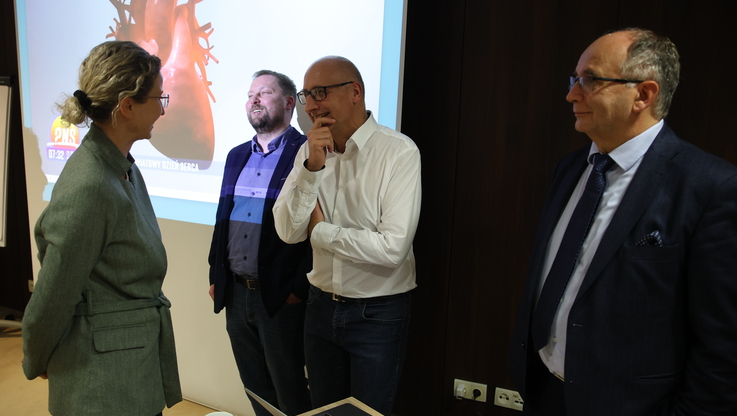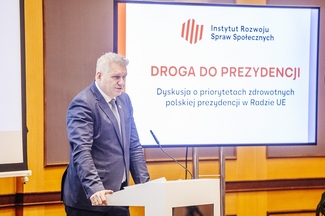Pobierz materiał i Publikuj za darmo
Pioneering innovations
Cross reference: Picture is available at AP Images (http://www.apimages.com) and http://www.presseportal.de/nr/115998/
Soon after the war, export trade began to propel Germany's automobile industry to its current position of dominance. By 1961, the Federal Republic was the world's largest exporter of automobiles, with foreign sales of one million vehicles a year. Even in 1959, exports accounted for 50.7 percent of total production. It was this foreign demand that first enabled Germany's automobile industry to build up its huge production capacity.
In the years before 1954, the BORGWARD Group catered exclusively to the domestic market. By 1957, however, it had become Germany's second-largest automobile exporter behind Volkswagen, with foreign sales of 6,232 units. The following year, this figure rose to 11,363 units, 72 percent of total production at BORGWARD. This put the Bremen vehicle manufacturer streets ahead of the rest of the German automobile industry, which had an average export share of 48.2 percent.
As soon as the war was over, Carl F. W. Borgward began setting up company plants in Argentina, Brazil, Indonesia, Spain and South Africa. Often, these operated in so-called CKD mode. The abbreviation CKD stands for "completely knocked down". This means the export of individual parts to a specific market, where they are assembled to form the finished vehicle, which is then sold.
There were other BORGWARD assembly plants in Chile, Mexico, Ireland, Antwerp and in Australia at Hartnett-Lloyd. In addition, BORGWARD founded its own sales company in the USA: BORGWARD Motors Corporation, which was based in Boston. As a canny entrepreneur, Carl F. W. Borgward quickly realized that boosting output would lead to lower unit costs—and that exports would therefore allow the company to market its vehicles more cheaply. At the same time, increased exports would help cushion the domestic downturn during the German winter, so that production could be spread evenly over the whole year. During the 1950s and '60s, demand for cars in Germany would regularly fall off so steeply during the winter months that almost all of the domestic carmakers were forced to cut shifts or produce for the stockpile. As a responsible employer, Carl F. W. Borgward invariably opted for the latter course of action, although this tied up a substantial amount of capital. During the 1950s, however, export sales successfully compensated for this winter downturn.
The BORGWARD Group rapidly consolidated its position in the export market. In the market both for cars and trucks with a payload of up to one metric ton, BORWARD's distinctive diamond-shaped badge was soon a dominant force in Sweden, the Netherlands and Norway. From the end of the 1950s onwards, exports to non-European countries such as the USA, Canada and South Africa also gained in importance.
Especially popular on the US market were compact cars made in Germany, which proved a big hit with commuters looking for a second or even a third car. Yet US manufacturers were quick to react and by 1959 had started to produce their own vehicles in this class. As a result, German exports to the US fell by 115,340 vehicles in 1960, a decline of 19 percent. With its large share of export trade, BORGWARD was especially hard hit by this downturn.
Nevertheless, with its resolute focus on exports and its desire to conquer markets worldwide, BORGWARD was way ahead of its time in the 1950s. And for BORGWARD today, the need to conquer markets around the world remains the major challenge of the 21st century.
Pobierz materiał i Publikuj za darmo
bezpośredni link do materiału
| Data publikacji | 26.08.2015, 14:05 |
| Źródło informacji | APA-OTS |
| Zastrzeżenie | Za materiał opublikowany w serwisie PAP MediaRoom odpowiedzialność ponosi – z zastrzeżeniem postanowień art. 42 ust. 2 ustawy prawo prasowe – jego nadawca, wskazany każdorazowo jako „źródło informacji”. Informacje podpisane źródłem „PAP MediaRoom” są opracowywane przez dziennikarzy PAP we współpracy z firmami lub instytucjami – w ramach umów na obsługę medialną. Wszystkie materiały opublikowane w serwisie PAP MediaRoom mogą być bezpłatnie wykorzystywane przez media. |






